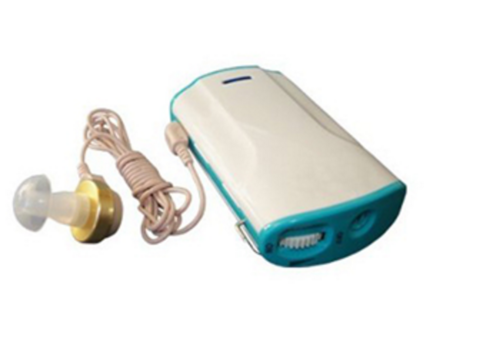Body-worn hearing aids are devices where the electronic components are situated in a little box-shaped container, which is not worn on or in the ear, but on the body.
(The amplified sound is delivered to the ear via a cord)
The box is usually clipped to a pocket or belt or worn around the neck and the amplified sound is delivered to the ear via a cord and earphone. The microphone is situated on the box, so wearers must be aware that if they wish to have any sound amplified, the microphone on the box must be able to pick up that sound.
What are the advantages and disadvantages of body-worn hearing aids:
Body-worn hearing aids were very popular a couple of decades back, as they were, at the time, the only way to provide a lot of power for more severe hearing losses. As technology in smaller BTEs improved, the need for body worn products decreased sharply. However, new body-worn hearing aids are still produced by some hearing aid manufacturers (including the likes of Panasonic).
Advantages
- Battery life/cost
- Powerful amplification
- User controls
Disadvantages
